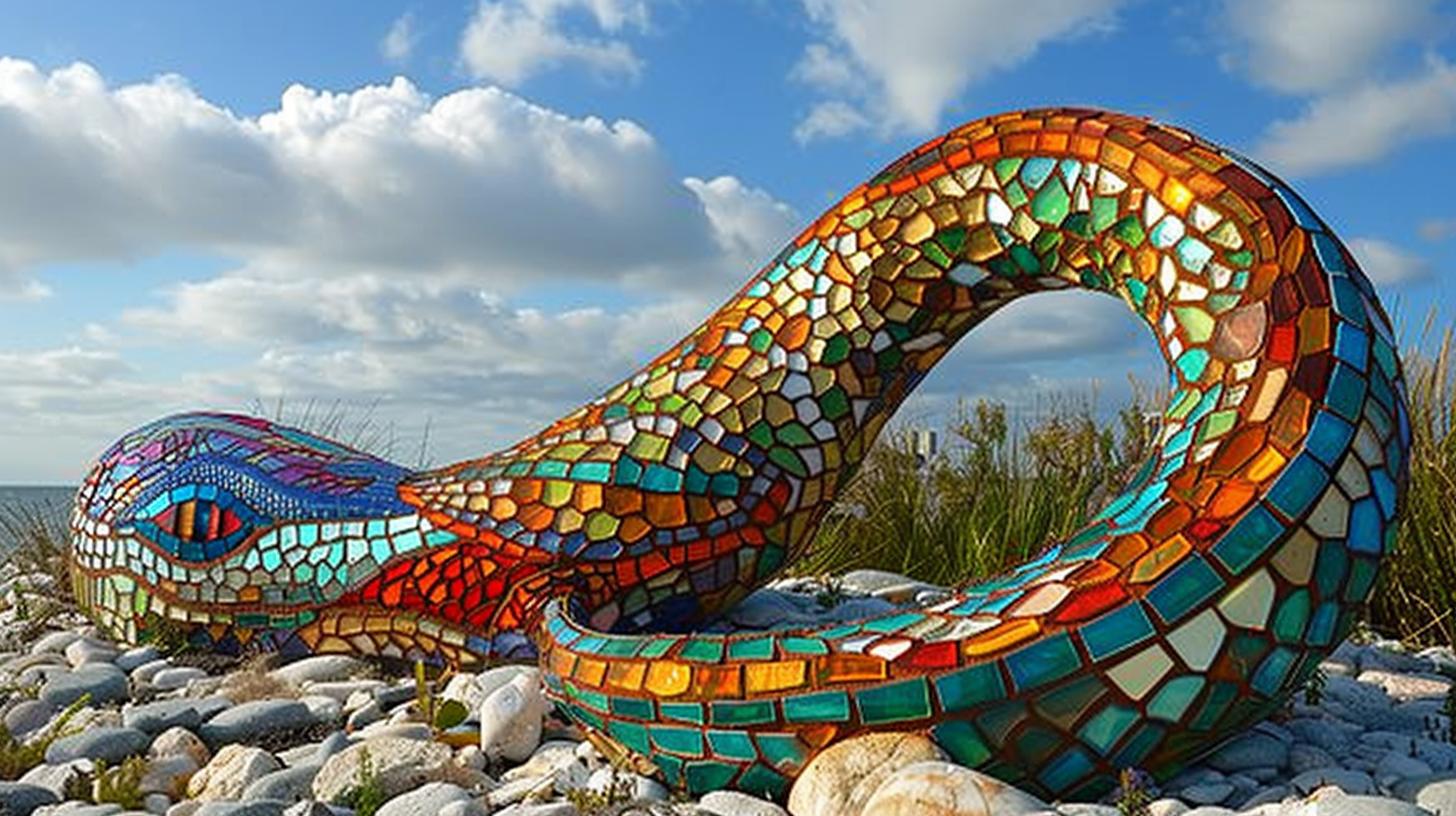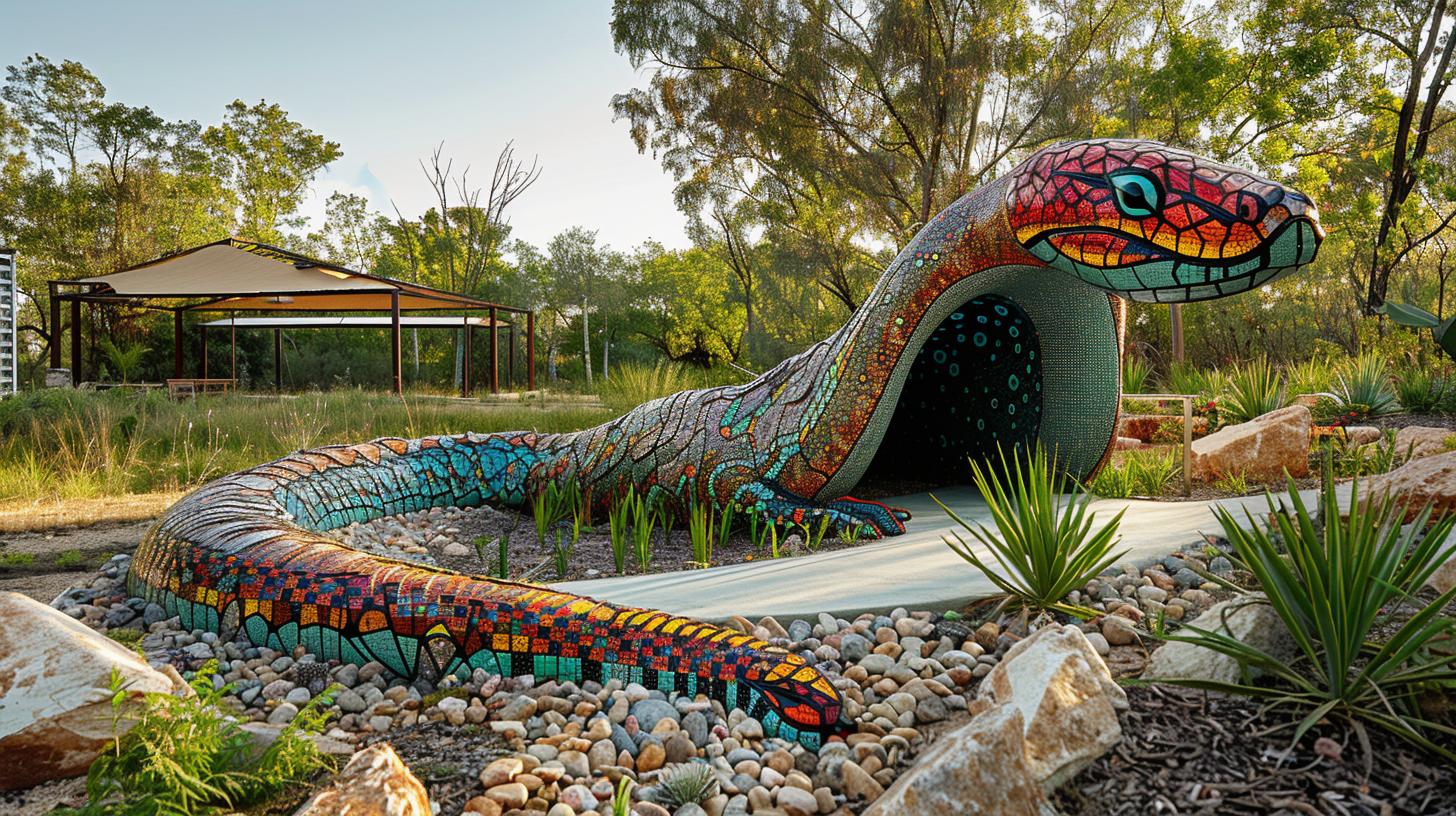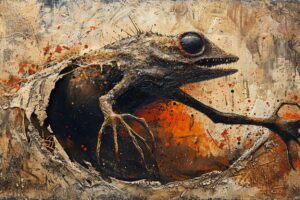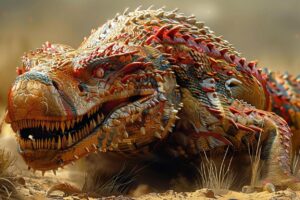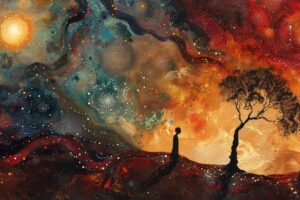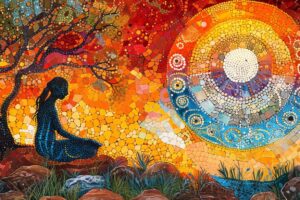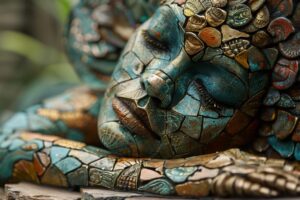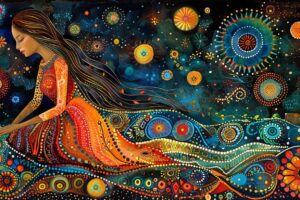Aboriginal Rainbow Serpent Myth: Exploring the Powerful Australian Deity

The Aboriginal Rainbow Serpent Myth is a powerful deity in Australian Aboriginal mythology, associated with creation and water. Revered for its life-giving and protective attributes, the Rainbow Serpent is depicted as a mythical creature with various animal features.
Its influence on rituals, art, and contemporary beliefs highlights its enduring significance in Australian culture.
Origins of the Aboriginal Rainbow Serpent Myth
The Aboriginal Rainbow Serpent Myth holds deep cultural significance within Australian Aboriginal beliefs, encompassing a rich tapestry of stories and traditions. This mythical entity is revered for its connection to creation and the natural world, encapsulating the essence of life and spirituality.
Cultural Significance
The Rainbow Serpent is deeply intertwined with the cultural fabric of Aboriginal societies, symbolizing the ancestral ties to the land and serving as a guardian of spiritual knowledge. Its presence in rituals and ceremonies underscores the importance of tradition and reverence for the natural world.
Mythical Attributes
With its associations with water and creation, the Rainbow Serpent embodies the duality of life-giving benevolence and potentially destructive power. The mythical attributes of this deity reflect the complexities of nature and the transformative forces at play in the Aboriginal worldview.
The Role of the Rainbow Serpent in Aboriginal Beliefs
The Rainbow Serpent holds a central role in the spiritual beliefs of Australian Aboriginal communities, embodying both creative and protective forces.
Creation Stories
In Aboriginal mythology, the Rainbow Serpent is often depicted as the creator of the world and its inhabitants, shaping landscapes and rivers through its movements and actions.
Protective Powers
Believed to possess immense power, the Rainbow Serpent is revered for its ability to safeguard the land and its people from harm, serving as a potent guardian entity.
Depictions of the Rainbow Serpent in Aboriginal Art
The representation of the Rainbow Serpent in Aboriginal art holds deep cultural significance, conveying symbolic meanings and artistic expressions.
Symbolism and Imagery
- Symbolic Elements: Aboriginal artworks often depict the Rainbow Serpent with specific features symbolizing creation, protection, and renewal.
- Sacred Colors: Artists use vibrant hues to highlight the spiritual essence of the Rainbow Serpent, with colors representing life, water, and power.
- Geometric Patterns: Intricate designs and patterns in artworks symbolize the intricate connection between the Rainbow Serpent and the natural world.
Artistic Representations
- Varied Mediums: Aboriginal artists utilize diverse mediums such as painting, carving, and weaving to represent the Rainbow Serpent.
- Regional Styles: Different Aboriginal communities have unique artistic styles that influence the portrayal of the Rainbow Serpent in their art.
- Interpretive Freedom: Artists interpret the Rainbow Serpent myth creatively, infusing personal and cultural elements into their artistic renditions.
Rituals and Ceremonies Involving the Rainbow Serpent
Exploring the rituals and ceremonies involving the Rainbow Serpent offers insights into the deep spiritual connection that Aboriginal communities maintain with this powerful deity.
Water-Related Rituals
- Initiation ceremonies near water bodies symbolize rebirth and renewal.
- Offerings of food and song are presented to honor the Rainbow Serpent’s association with water.
- Individuals partake in cleansing rituals to purify their spirits and seek the Serpent’s blessings.
Spiritual Practices
- Dreamtime stories guide ceremonial practices, emphasizing respect for the land and ancestral spirits.
- Chants and dances are performed to invoke the Serpent’s protection and guidance.
- Meditative rituals connect individuals with the Serpent’s energy and wisdom.
The Rainbow Serpent in Contemporary Aboriginal Society
The Rainbow Serpent continues to hold a revered status within contemporary Aboriginal society, embodying deep cultural significance and spiritual connection.
Continued Reverence
1. The Rainbow Serpent remains a central figure in Aboriginal rituals and ceremonies, revered for its role as a protector and creator.
2. Aboriginal communities maintain traditions of paying homage to the Rainbow Serpent through songs, dances, and visual art.
- Ceremonial offerings and rituals are performed to honor the Rainbow Serpent’s power and influence.
- Elders pass down teachings and stories about the Rainbow Serpent to ensure its continued reverence among the younger generation.
Modern Interpretations
1. In modern times, the Rainbow Serpent is being reinterpreted in various art forms, reflecting contemporary Aboriginal identity and culture.
2. Artists incorporate the Rainbow Serpent motif in paintings, sculptures, and other artworks to express cultural pride and spiritual connection.
- The Rainbow Serpent’s symbolism is adapted to address current social and environmental issues, emphasizing sustainability and conservation.
- Contemporary interpretations of the Rainbow Serpent reflect the ongoing evolution of Aboriginal beliefs and practices in response to changing contexts.
The Rainbow Serpent Myth in Popular Culture
Exploring the presence of the Rainbow Serpent in modern media and beyond.
Influence in Media
Various forms of media have depicted the Rainbow Serpent, ranging from visual arts to literature and film. Its symbolic significance and powerful attributes make it a compelling subject for artistic interpretation.
Global Recognition
The myth of the Rainbow Serpent has transcended cultural boundaries, gaining recognition worldwide. Its portrayal in global contexts reflects the universal appeal of this iconic figure in Australian mythology.
Conservation Efforts and the Rainbow Serpent
Efforts to conserve and protect the Rainbow Serpent and its associated ecosystems are crucial in preserving the cultural and environmental heritage of Australian Aboriginal communities.
By recognizing the significance of the Rainbow Serpent in Aboriginal beliefs, initiatives for environmental protection have been established to safeguard the habitats and resources linked to this revered deity.
Environmental Protection
- Implementing conservation programs to preserve the natural habitats where the Rainbow Serpent is believed to reside, such as water bodies and desert landscapes.
- Collaborating with Indigenous communities to ensure sustainable land management practices that respect the cultural significance of the Rainbow Serpent.
- Monitoring water quality and quantity in regions associated with the Rainbow Serpent to maintain ecological balance and support biodiversity.
Ecological Awareness
- Enhancing public awareness about the ecological importance of the Rainbow Serpent’s habitats to promote responsible stewardship of natural resources.
- Engaging in educational outreach programs that highlight the interconnectedness between cultural beliefs and environmental conservation efforts.
- Fostering partnerships between government agencies, conservation organizations, and Aboriginal communities to address environmental challenges and protect the Rainbow Serpent’s legacy.
The Rainbow Serpent’s Legacy in Australian Mythology
Enduring Influence
The legacy of the Rainbow Serpent in Australian mythology endures through generations, shaping cultural practices and beliefs.
Its symbolic significance transcends time, serving as a reminder of the interconnectedness between ancient traditions and contemporary Indigenous identity.
Symbolism
The Rainbow Serpent symbolizes the cyclical nature of life, death, and rebirth in Aboriginal culture. Its presence in storytelling and artwork reflects the ongoing spiritual connection to the land and its original inhabitants.
The enduring influence of the Rainbow Serpent permeates various aspects of Aboriginal life, from rituals to artistic expression.
Interpretations
Different Aboriginal communities interpret the Rainbow Serpent’s legacy in unique ways, adding depth and richness to its mythological significance. The diversity of interpretations showcases the dynamic nature of myth and the flexibility of cultural narratives in shaping collective identity.
Cultural Heritage
The Rainbow Serpent’s legacy is deeply intertwined with Australia’s cultural heritage, representing the spiritual foundation of Indigenous societies. As a powerful creator and protector, its mythological presence underscores the importance of preserving ancestral knowledge and traditions for future generations.
Guardianship
The Rainbow Serpent serves as a guardian of the natural world, embodying the responsibility of stewardship and environmental conservation. Its role in cultural heritage highlights the interconnectedness between human communities and the land, emphasizing the need for sustainable practices and ecological awareness.
Legacy Transmission
Through oral traditions and sacred ceremonies, the legacy of the Rainbow Serpent is passed down from elders to younger generations, ensuring continuity in cultural teachings and spiritual practices. The preservation of this legacy contributes to the ongoing resilience and vitality of Aboriginal communities.
- Symbolism of the Rainbow Serpent in Aboriginal art
- The significance of the Rainbow Serpent in storytelling traditions
- The role of the Rainbow Serpent in ceremonial practices
Interpretations and Misconceptions Surrounding the Rainbow Serpent
Exploring the various interpretations and misconceptions surrounding the powerful entity of the Rainbow Serpent in Australian Aboriginal mythology reveals a complex tapestry of beliefs and cultural perspectives.
Western Perceptions
Western perspectives on the Rainbow Serpent often struggle to grasp the deep spiritual significance attributed to this deity by Aboriginal communities. Misconceptions arise from a lack of understanding of the nuanced relationship between the Rainbow Serpent, creation stories, and ecological balance.
Cross-Cultural Comparisons
When comparing the Rainbow Serpent myth across cultures, it becomes evident that interpretations vary widely. While some see the Rainbow Serpent as a symbol of renewal and life, others may view it through a lens of fear or misunderstanding.
These cross-cultural comparisons highlight the diversity of perspectives on this ancient deity.
Indigenous Perspectives on the Rainbow Serpent’s Power
Exploring the traditional knowledge held by Indigenous communities regarding the Rainbow Serpent reveals profound insights into their spiritual beliefs and cultural practices.
Traditional Knowledge
- Passed down through generations, traditional knowledge of the Rainbow Serpent encompasses intricate details about its role in creation and its significance in maintaining the balance of the natural world.
- This knowledge is often transmitted orally, highlighting the importance of storytelling and ancestral teachings in preserving Indigenous wisdom.
Deep Spiritual Connection
- Indigenous perspectives emphasize the deep spiritual connection they share with the Rainbow Serpent, viewing it as a sacred being that embodies the essence of life and renewal.
- This connection extends beyond mere reverence, transcending into a profound spiritual bond that guides their relationship with the land and all living beings.
The Revered Status of the Rainbow Serpent Across Generations
The Rainbow Serpent holds a significant place in Aboriginal culture, revered across generations for its symbolic significance and spiritual power.
Passing Down Oral Traditions
1. Elders pass down stories of the Rainbow Serpent through oral traditions, ensuring the preservation of this important cultural knowledge.
- Stories depict the Rainbow Serpent as a creator and guardian, emphasizing its role in Aboriginal spirituality.
- Through storytelling, younger generations learn about the significance of the Rainbow Serpent in their heritage.
Continuation of Sacred Practices
2. Traditional ceremonies and rituals involving the Rainbow Serpent are passed down from one generation to the next, maintaining the spiritual connection to this revered deity.
- Ceremonies honor the Rainbow Serpent as a protector of the land and keeper of life.
- Participants engage in rituals to show respect and gratitude towards the Rainbow Serpent for its role in Aboriginal beliefs.
The Future of the Aboriginal Rainbow Serpent Myth
Exploring the potential developments surrounding the Aboriginal Rainbow Serpent Myth as it continues to evolve within contemporary Australian Indigenous societies.
Preservation Efforts
- Funding initiatives to support the documentation and conservation of traditional stories and rituals.
- Establishing cultural centers dedicated to preserving and educating the public about the myth’s significance.
Evolving Beliefs and Practices
- Adapting traditional ceremonies to reflect modern values and challenges.
- Integrating new technologies to share and transmit the mythology to future generations.
.

